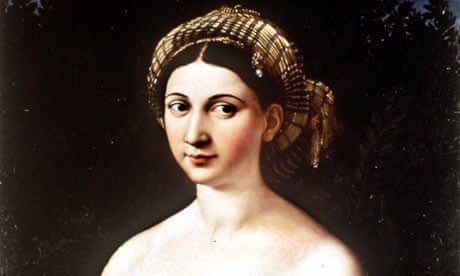Can you die of too much sex? That's what happened to the divinely gifted Raphael, according to his 16th-century biographer Giorgio Vasari.
Vasari recounts in his book The Lives of the Artists that Raphael, who died aged 37 at the peak of his powers, was brought down by excessive passion. This view of health is medieval: the body is controlled by humours, health depends on a balance of humours, and Raphael's was destabilised by too much action in bed. Well, it's a theory.
And yet Vasari goes into detail about Raphael's emotional life. The young, gifted, handsome and courtly artist, he claims, was so enamoured of his mistress that she had to be allowed to live with him in the Villa Farnesina in Rome (as it's now called) while he was painting its frescoes. No sex, no frescoes. The story of Raphael's sensual relationship with La Fornarina, as Vasari names her, fascinated artists down the centuries. Raphael became an icon of lust.
In the Turner exhibition currently at Tate Britain, you can seen Turner's imposing painting of Rome from the Vatican Loggia, with Raphael and La Fornarina in the foreground (Raphael is showing off his latest paintings while her jewellery is scattered on the parapet). Raphael was the favourite painter of the popes. That such a perfect church painter was, in fact, making love to his mistress in the Vatican was an idea that titillated Turner – and it titillated Picasso even more.
Near the end of his life, Picasso created a series of pornographic etchings that depict Raphael and La Fornarina making love, with Michelangelo hiding under the bed.
The legend of lustful Raphael, it seems, has entranced artists. But is there any truth in it? Well, before dismissing it as a salacious tale, you have to look at Raphael's portrait of a naked woman – is she La Fornarina? – in the Barberini Palace in Rome. She stands displaying her beauty, in a pose at once classical and intimate. She wears an armband proclaiming her as his. It's a pretty unambiguous declaration of desire – not a remote ideal nude, but the artist's own lover. Surely sex didn't kill Raphael. But it does help his art live on.

Comments (…)
Sign in or create your Guardian account to join the discussion